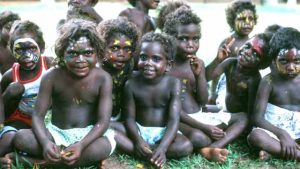Home » Commentary » Opinion » The great Indigenous funding fallacy
· THE SPECTATOR: FLAT WHITE
 Aboriginal people in the ACT are receiving a similar level of government funding to those in Western Australia, despite having a household income higher than the typical Australian family. Public servants are ‘living off Indigenous disadvantage’ in leafy inner city suburbs. Meanwhile remote Indigenous communities are being denied hundreds of millions of dollars allocated specifically to them.
Aboriginal people in the ACT are receiving a similar level of government funding to those in Western Australia, despite having a household income higher than the typical Australian family. Public servants are ‘living off Indigenous disadvantage’ in leafy inner city suburbs. Meanwhile remote Indigenous communities are being denied hundreds of millions of dollars allocated specifically to them.
This is the great fallacy of a funding system that is dominated by big bureaucracy, and places too much emphasis on Indigeneity and not enough on regionally-specific needs.
The issue reared its head last week as remote Indigenous groups called for the GST funding model to be reviewed to reflect the highly varying circumstances of Aboriginal and Torres Strait Islander people across Australia. They argue that the growing number of people identifying as Indigenous in cities is draining desperately needed money from remote communities.
When the data is analysed it is hard to ignore these claims. A quick survey of the 2016 census and government expenditure figures suggests that Aboriginality is undoubtedly being used as the key determinant for the distribution of Indigenous-specific funding.
Take the comparison between the ACT and Western Australia, for example. The average Indigenous person in the ACT and WA receives $52,000 a year in government funding — $8000 higher than the national Indigenous average.
On face value, you would think that the needs of Indigenous people in both regions were similar. However, there is a vast difference in the socio-economic indicators of Aboriginal people in the ACT and WA.
According to the 2017 Closing the Gap Report Indigenous Australians in WA sit significantly behind their ACT counterparts in relation to all seven targets.
Only 58% of Western Australian Indigenous people aged 20-24 have completed year 12; the lowest ratio of all states and territories. This is in contrast to 83% in the ACT, the highest across Australia. Despite this, WA receives only marginally more education funding.
Moreover, only 39% of working age Aboriginal people in WA are employed. In the ACT, this figure is 63% — just 9% behind the national average.
Such anomalies can be found throughout the Indigenous funding model. They suggest that the system is clearly broken and does little to acknowledge the realities on the ground. You only need to take a stroll through a remote Indigenous community such as Kununurra to see that the situation in WA is vastly different to that in Canberra.
Last week’s renewed debate serves as a stark reminder of the great inefficiencies in Indigenous affairs. More than $6 billion is spent on Indigenous-specific programs annually. Hundreds of millions, if not more, could be redirected to better use.
Professor Marcia Langton from Melbourne University has suggested that other indicators, such as high housing occupancy rates, would provide a better guide for funding distribution.
This is a sound idea based on evidence, rather than broad demographic categories that are designed to easily tick a box. It would ensure that money is being directed to address the key disadvantages as required in each state and territory.
When household occupancy figures are analysed, the gaps between certain regions are vast. The average Indigenous household in WA has 3.3 people, with a median weekly income of $367 per person.
By contrast, in the ACT the average Aboriginal household has 2.9 people, with a median weekly income of $650.34 per head — $250 higher than Victoria, the next highest ranking state.
Such discrepancies leave you with little doubt as to where the need is greatest.
Four of the seven closing the gap targets are set to expire in June. They are likely to be reviewed and renewed. Perhaps this time a greater focus will be placed on regional evidence, rather than the ‘Indigenous’ check box on the census.
Charles Jacobs is a Policy Analyst in the Centre for Independent Studies Indigenous Research Program and author of the report: Risky Business: the problems of Indigenous business policy.
The great Indigenous funding fallacy